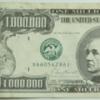So with this fancy new laser video out... no no not getting into it. I got to thinking about new materials, iphone cases and computer and what not (also wondering how it engraves on aluminum, with 40w). Where can I go/whats the best way to identify new settings for your laser.




 Reply With Quote
Reply With Quote








